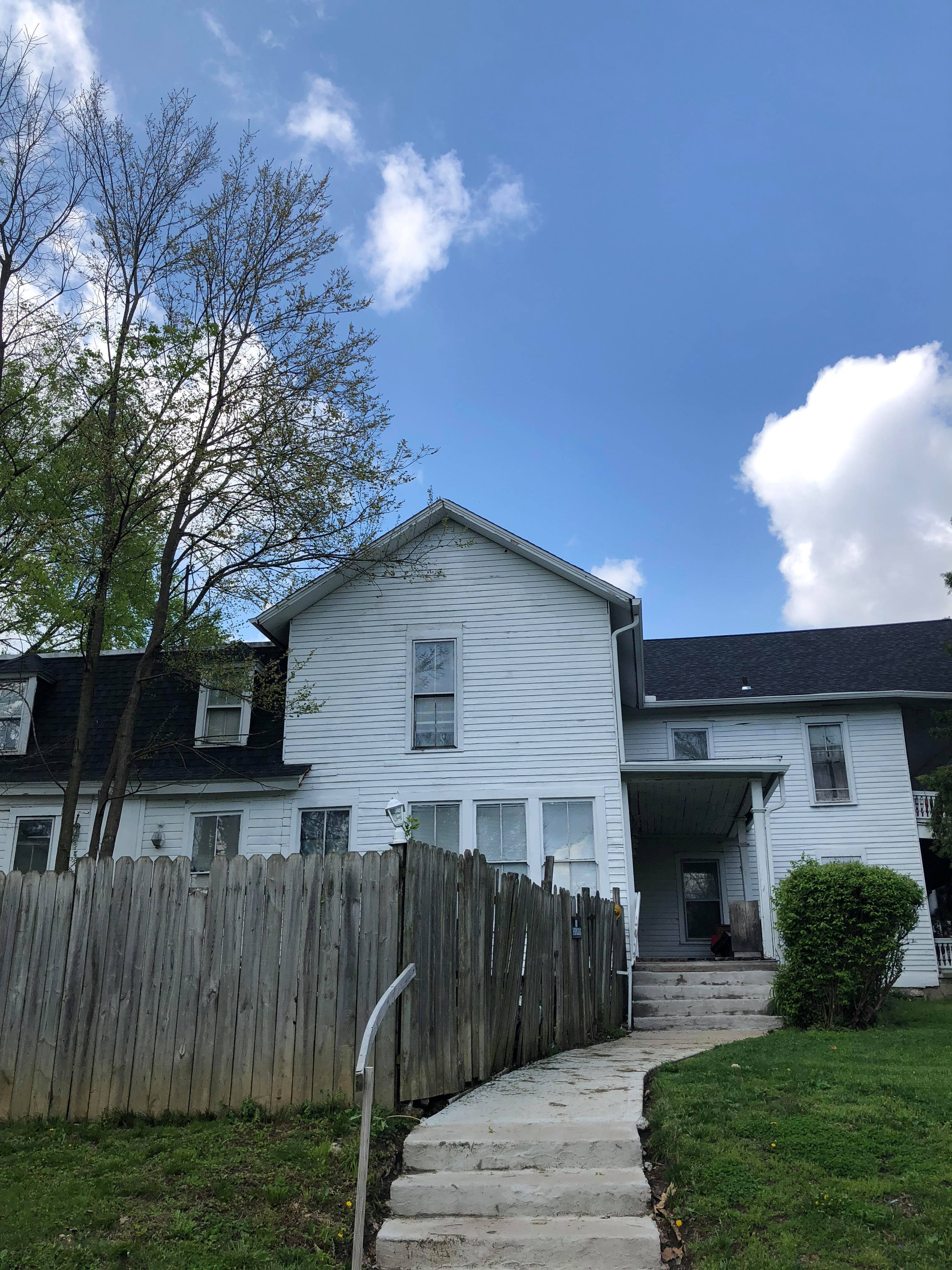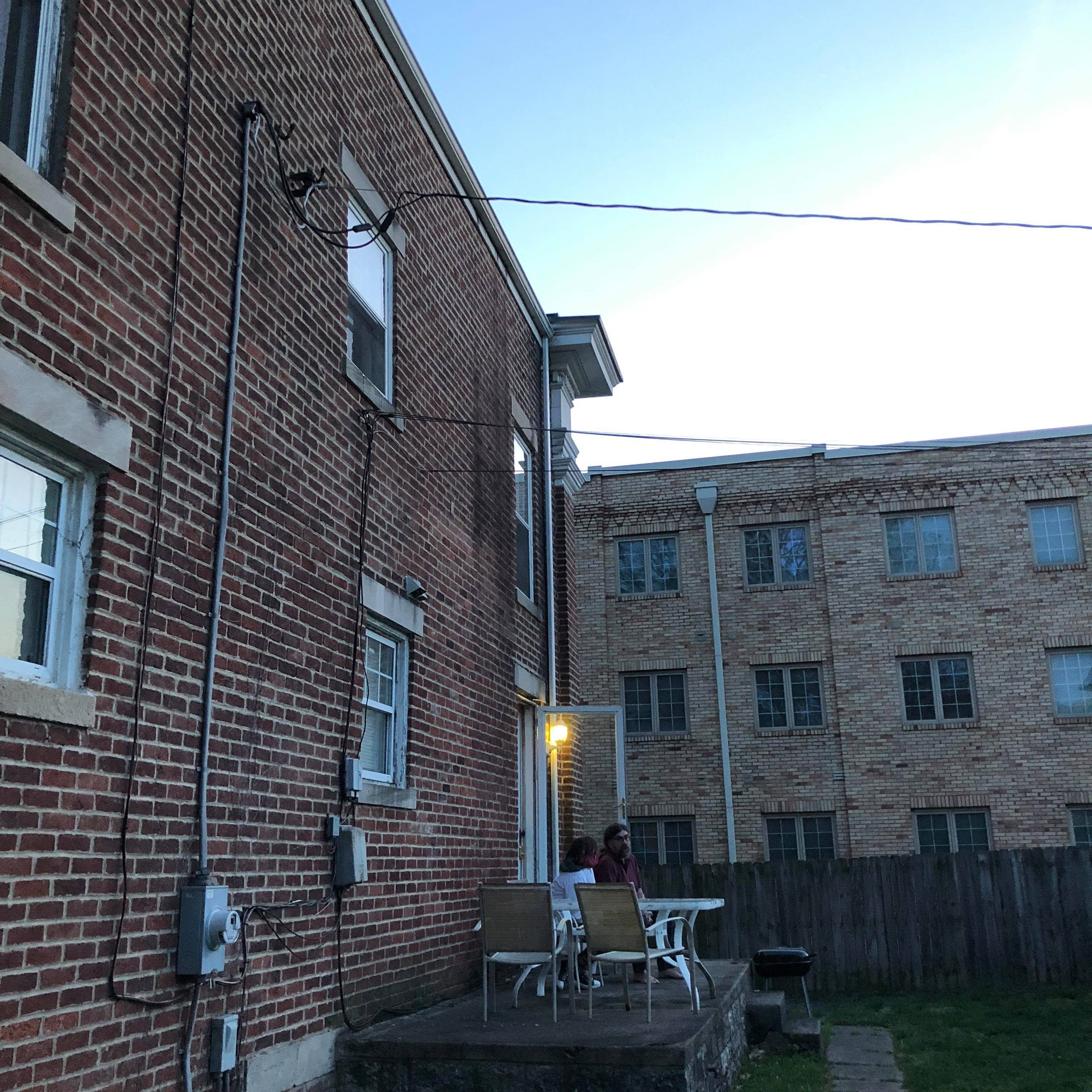In the Neighborhood
This past weekend I heard from Emerson Dickman, Esq., a Dyslexia Industry lawyer whose lovely and competent wife, Georgette, was a colleague of mine in the Orton-Gillingham world years ago. Emerson invited me to help him understand my claims that the professional development I offer is “groundbreaking, game changing professional development.” So I thought I’d let the evaluations from the weekend’s Etymology VII! conference answer his question for me:
“I love that I can keep adding to my understanding of the English Language and debunk much of what I learned previously.” [Next to ‘debunk’ she drew a tiny Layers of Language triangle, LOL].
“Learned so much — spiked my love of all of this again…and renewed my interest in learning more — Thank you for all of that!”
“You turned my world upside down and opened a floodgate of learning opportunities for my students and myself. Thank you.”
“Thank you so much! Wonderful conference! I hope to attend again next year and I look forward to future LEXinars.”
“All teachers that will be teaching the writing system…should learn this information.”
“Highlighting related letters clears up so many reasons for how/why we came to our current spellings.”
“I loved learning about the connections between graphemes on a deeper level.”
“Really appreciate you sharing ‘the truth’ through all your research and application.”
“This conference changed my life a year ago and continues to IMPROVE my life and those of my students.”
“It was awesome! I’ll be back!”
“I loved it!”
This was the seventh Etymology weekend that Douglas Harper and I have put together. We started in 2013, and now, the broader community of folks who study with us has a depth of understanding of the history and relationships inherent in English spelling that is unparalleled elsewhere. The biggest experts in the Dyslexia Industry — those who claim that etymology matters and is important — continue nonetheless to make egregious errors in identifying the etymological facts of written words, but my community of orthographic etymologists understands that a word is not Anglo-Saxon [sic] simply because someone kinda famous says it is. It really bothered Emerson that I called out some of these and other errors in the field.
Emerson is not one such famous expert himself, nor does he claim to be one. “I am not a scientist, researcher, or practitioner,” he writes, but that doesn’t stop him from going on to explain what he perceives the utility of nonsense words to be, and then goes on to offer this gem: “Rules will often have exceptions.” Of course, “exceptions” in the Dyslexia Industry are also known as *red words, *sight words, *learned words, and the like, but my orthographic study community understands that real science doesn’t rely on “exceptions” to pass its agenda. Mr. Dickman argues that it is not wrong “to follow an old saw that is neither one hundred percent accurate nor always factual,” but of course, that’s not a scientific statement, and his opinion is just an opinion.
I have a different opinion. My opinion is that it’s not OK to teach children things about their own language that are “not always factual” or “accurate,” any more than it would be OK to teach children things about math that are “not always factual” or “accurate.” Moreover, it’s definitely not OK to write academic book chapters and articles — especially when they’re about etymology — that identify the etymologies of words in ways that are “not always factual” or less than “one hundred percent accurate,” and I have written about this extensively. Unfortunately, Mr. Dickman is very busy and didn’t have time to read more than one blog post before writing to me. Fortunately, he had plenty of time to write to me about his opinions of me, his opinions of my work with which he is not at all familiar, and his opinions of etymology.
Emerson graciously and carefully explained to little old me that children really don’t want or need to study etymology. “Some children may be satisfied just learning to read,” he asserted. Now, I’m pretty sure that the curriculum-pushers are unmoved by what satisfies some children; more to the point, many children will have a devil of a time learning to spell unless they understand some things about etymology. Do they have to understand all the things? Of course not; no one does. Doug Harper said he’s been making The Online Etymology Dictionary for 18 years, and he’s still learning new things, and so am I. Just because I know a lot doesn’t mean I think I have nothing to learn. It does mean that I check a reliable dictionary or three before I call something an Anglo-Saxon word in my published work, though.
Just in case I was still unclear on what etymology is and its pedagogical value, though, Mr. Dickman stepped up his methodical explication of why it’s just not all that important. “Teaching a child to read is different from educating a graduate student (who can already read, write, and spell) as to the etymological foundation of a particular word,” he details, and none too soon, because boy howdy had I been confusing those two things! Phew! You guys, look how lucky we all are that Emerson wrote to clear this up for us! I am just so grateful for that clarity before I go on making a fool of myself studying etymology like an actual orthographic linguist instead of studying it the way a lawyer thinks I should.
Unfortunately, I am really slow on the uptake, apparently. See, the thing is, Emerson Dickman, Esq., is not the first man in the Dyslexia Industry to have to explain to me that (a) exceptions are a thing, and (b) it’s OK to lie to children about etymology if they’re young enough. Malt Joshi said the same things to me nearly a decade ago; his versions were “Well, life is full of exceptions,” after I told him that punishable, passable, and agreeable were not Anglo-Saxon words, and “we work with very young children, and it’s a very simple thing to teach them,” even though I had just falsified that “very simple thing” to his face. Apparently these important lessons still just haven’t sunk in for me. Womp-womp.
Gee, what would hot-blooded, middle-aged lady linguists and scholars like me do without cool-headed professional men — specifically, lawyers and psychologists — to clear up for me how language does and doesn’t work and when it’s OK to teach children things that are not always factual or accurate. Wow. I am a Lucky Girl Linguist indeed, especially to have heard from Emerson about what a big head I have and how I should really be living my life and studying etymology with kids, right in the middle of Etymology VII!
* * * * *
I started writing this post about our Etymology VII! weekend shortly after it ended on Sunday afternoon, sitting at the big table in the formal dining room of the 19th-century bed and breakfast we stayed in, in a historic neighborhood near Dayton, Ohio’s Great Miami River.

A Linguist in her Natural Habitat
My brilliant friend and colleague Emily took this photo of me working on this post, and it captures so much about the weekend during which she kept her eye on Douglas Harper
and me in more ways than one.
This Etymology! community is seven years old; it has a history, a biography. The community was conceived online, in emails between Douglas Harper and me, and it was born a bit later in a Quaker meeting house on the campus of a Friends School in greater Philadelphia, the site of our first Etymology! weekend. Since then, we have met at a Lifelong Learning Center in Chicagoland, Illinois, twice, and in three different private schools in Abington, Pennsylvania, San Francisco, California, and Portland, Oregon. Our seventh weekend, this year’s, was hosted by the Neil and Willa Smalley Children’s Dyslexia Center, lodged in the historic Dayton Masonic Center, built in the 1920s on Grafton Hill, facing the wide, greenish waters of the Great Miami.

Dayton Masonic Center
The bed and breakfast we stayed in, Doug and Emily and our friend Peg and I, is a big,
old, brick mansion that has been lovingly restored by its current owner. Its neighborhood can best be described as ‘transitional,’ perhaps, as some of the neighbors are wealthier and living in well-tended, stately old homes, but many others are struggling, and their properties reflect that. The Dayton View neighborhood itself dates back to the 1830s, when an enterprising pioneer named J.O. Arnold homesteaded there, and over the years, effected his vision of developing a tree-lined neighborhood full of stately homes, surrounding his farmhouse. That original 1836 farmhouse still stands at the corner of Superior and Arnold.

J.O. Arnold 1836 Farmhouse
It was the Great Flood of 1913 that drove many of the neighborhood’s early, prosperous inhabitants out of their ruined houses and across the river to the higher ground of the Oakwood neighborhood where Orville Wright was building his success mansion, Hawthorn Hill. Many of the old Dayton View neighborhood’s grand mansions were abandoned. Over the years, less wealthy families moved into many of these abandoned mansions, but, unable to afford the maintenance, let them fall into disrepair. Many were converted into apartments and flophouses; our b&b had been re-converted from a 5-unit apartment back into a 3-story house.

Decompressing on the Back Deck
We all found the neighborhood to be charming and rather fascinating, an eclectic mix of restored manors, condemned ramshackle properties, and rundown but still-livable homes painted in pastel colors and adorned with Christmas lights, American flags, and fake flowers. When we first arrived last Wednesday, I gawked at houses as I drove around; Emily later went out on a photo-taking expedition. I marveled at the mixture and wondered how such beautiful old homes had fallen into disrepair. It wasn’t until our hostess at the Dayton Masonic Center explained the story of the flood and the historical pendulum swing between prosperity and poverty that the miscellany of the neighborhood, its quirks and hiccups, began to make sense.
* * * * *
The Etymology VII! conference itself had a theme, as it does each year, and this year’s theme was English Spelling. Doug provided the backdrop, the story of Old English England and Middle English England, and I filled in the orthographic specifics. I gave participants a big picture of both periods’ writing systems, and also a detailed inventory of graphemes and their commensurate phonemes. Doug and I together painted a picture of the end days of Middle English: the effects of the Black Death, the printing press, and the Renaissance on the people and parlance of England, moving us toward Modern English. Then, on the afternoon of our last day, I invited everyone present to take a close look at Modern English spelling and to endeavor to discover its patterns and proclivities. What did Modern English have that Old and Middle did not? What could any of us explain to an alien about how Modern English writes its words?
Given this assignment, pretty much everyone started agitating about the effects of texting and other tech-age practices on the writing system, wrongly supplanting the “Modern English” of the assignment with “Present-Day English in My Immediate Sphere of Reference.” I pulled their heads out of digi-speak, and invited them to reflect on the actual freaking writing system, not some fearful knee-jerk reaction to changing technologies. Properly oriented, they did a beautiful job. Here’s what they came up with to describe Modern English Orthography:
Modern English orthography
…represents meaning first.
…prioritizes morphology over phonology.
…has both productive and non-productive suffixes.
…requires a least 3 letters for content words; function words MAY have 1 or 2.
…may make a change to a base or stem when adding a suffix in lexical words.
…may have double or doubled consonants in lexical words.
…may have a replaceable <e> in lexical words.
…may contract function words.
…may reflect Classical spellings in direct Greek and Latin loans.
…has etymological markers that may reflect
~Classical spellings.
~scribal printing errors and innovations.
~historical, native English spellings.
…spells non-alphabetic loanwords with default spellings.
…spells homophones differently, if possible (Homophone Principle).
…may associate a single spelling with multiple pronunciations
…may associate a single pronunciation with multiple spellings.
…governs and constrains spelling choices by etymology and place value.
…may be affected by stress.
…has more digraphs than single letter graphemes, and it also has trigraphs.
…has zero allophone markers.
Now, see, if you don’t understand anything about the history of English spelling, then it would be nigh on impossible to speak intelligently about its present. Both Marcia Henry and Louisa Moats make claims, for example, about Old English spelling being somehow more simple and shallow than our present-day system, and thus easier. “Anglo-Saxon vowels were spelled as they sounded,” claims Moats. And “Words in the Old English period were phonetically [sic] very regular,” claims Henry. These facile representations suggest that there was a single Old English writing system, and that it was comprised of an inventory of 1:1 graphemes and phonemes, a suggestion that is — like too many of the unchecked etymological claims these two writers make — demonstrably false.
Old English had not one, but two writing systems, the Futhorc runic system, and an adapted Latin alphabetic system. Within each of these was considerable variation. In the Latinate system, the graphemes <þ> and <ð> both spelled the voiced and voiceless segments we now spell with a <th>. An <f> could spell both [f] and [v]. Anglo-Saxon scribes had their choice of three different characters to spell both the ‘hard’ and ‘soft’ pronunciations of <g>, and the letters <c>, <s>, and <h> could each be pronounced at least two different ways. In spite of Louisa’s false claims, Old English vowel graphemes all had two distinctive pronunciations, long and short, and the distinction was not marked in original Old English texts. Scribes in the north of the country pronounced and thus spelled things differently than scribes in the south, so again, there was really no unitary system for spelling Old English. Given the facts, it’s clear that the fawning characterizations by Moats and Henry of a system in which ‘letters’ and ‘sounds’ always played nicely and never left a mess is superficial at best, but really, ‘false’ is a more accurate descriptor.
Tip of the Day: Never believe stuff that people say about Old English unless, you know, they actually know Old English. Parsed texts, got tested, got graded, had to speak it in front of and with other people. Seems simple enough.
Middle English was largely written by native speakers of French, so it was even more wildly variable than Old English. The pairs of words heed and head, fear and fair, and garden and guardian were often spelled the same in Middle English: heed, heede, hede; fere, fer, feyre, fare; gardeyn, gardein(e), gardaine. Reading even a short passage in Middle English makes Modern English look incredibly tame and — that Holy Grail of spelling misunderstanders — “regular.” I asked participants to reflect on the history and relatives of each of those pairs of words and explain why they all got the spelling they deserved in the modern era. Here’s what they uncovered:
~ heed has an <ee> because it is first cousin to hood
~ head has an <ea> because it is distant cousin to caption, captain, capital
~ fear has an <ea> because of the <a> in its root (faron)
~ fair has an <ai> because of the <g> in its root (fæger)
~ garden has a <g> because it is cousin to yard
~ guardian has a <gu> because it is cousin to warden
These graphemic relationships are spelled out (Ha! I crack myself up!) in the 3rd Edition of my LEX Grapheme Deck, or, as I like to call it, my life’s work. It is the reason I laugh in the face of anyone who tries to lecture me about English orthography, phonemes, or phonology, because that deck is my proof in black and white of what I understand about English orthographic phonology AND the etymology that governs it.
The fact is that writing systems, like neighborhoods, are human. Regardless of the unfounded opinions of lawyers and psychologists, the fact is that children, even young dyslexic children, merit the facts of their own writing systems, and more importantly, the understanding that only facts can support. This not only makes them more securely literate; it also helps make them more confident in their own intellect and more curious about new learning.
Unlike the status quo in the Dyslexia Industry and its advice about exceptions and children, our community of orthographic scholars is actually growing, as is the depth of our understanding. What phonics calls *exceptions, *red words, *learned words, *sight words, etc., real orthographic study can actually explain, and those explanations help us understand the system as a whole. They are also often mind-blowing. No kid’s mind was ever blown by tapping and barking at nonsense words. It is only when we study the story of English spelling and the historical marks left upon it that we can begin to understand the miscellaney of our orthography; its quirks and hiccups begin to make sense.

14 Comments
Keep on keeping on Gina! Thanks for posting.
Priceless information, brilliantly written and irrefutable. Please keep writing and helping us understand the truth about our writing system. We need to teach children and teachers the true and not falsehoods ad ‘exceptions.’ Thanks for all.
Thank you Mary!
Gina- thank you for your accurate representation of Old, Middle, and Modern English!! I especially appreciate your analogy of writing to neighborhoods and learning some history about Dayton, Ohio – makes me want to visit!
Dayton is a remarkable American city. Lots of inventions and patents were born there, from air conditioning to airplanes!
Wow, how could I have forgotten that Tim Shanahan is a third phonics guy in the field who feels a need to assert repeatedly that (a) exceptions are a thing and (b) young children don’t merit the facts.
“That’s correct linguistically,” he writes on his blog, “but does it matter when you’re 7?”
His blog returns positive results for both “exception” and “irregular.” He identifies the words pear, cow, and come as ‘irregular,’ because, of course, he doesn’t understand why they are spelled the way they are.
“[C]ow follows a common spelling pattern,” he writes, “but not the major sound pattern for o, and pear and come are irregular.” By ‘major’ he means default, but here’s the thing: there IS no ‘o’ grapheme in ‘cow.’ There’s an ‘ow’ grapheme, ad it IS The default word-final grapheme for that segment.
Shanahan, like the other men, has no idea what he’s talking about with regards to spelling, but he never lets that stop him from acting like he does.
Shame on them all.
All I can say is, “Thank you.”
Thank YOU Deb for being there and bearing witness.
I look forward to every blog entry Gina — you never disappoint! Informative as always. Thank you. David Hornsby
Thank you so much, David!
I am a few years late reading this all, but I can’t even deal with a lawyer mansplaining to a linguist about English spelling. And to think that because Marcia Henry may be a nice and caring person, which I’m sure she is, she does not make mistakes. It’s clear that he cares for Ms Henry and felt a manly call to defend her honor, but that sure as heck doesn’t make wrong right or do anything to help our kids read.
Since when does a “manly call to defend [the] honor” of one woman need to involve treating another one like slime mold? If indeed that was his motivation, the attempt was ham-fisted at best, and rather narcissistic. It wasn’t about Marcia; it was about Emerson.
Besides, I didn’t assail her honor, of course, so he can tuck his Dickman back into his Pantsman and stop trying to be a stupid hero.
Gina, I’m not sure if you added to this later or I just was too lazy to scroll down (HA!) but wow! What a wonderful summation of the weekend.
That next to last paragraph is pure gold, ladies and gentlemen, pure gold.
(which I KNOW is OE, because I bothered to look it up
…in three sources
…not authored by phombies)